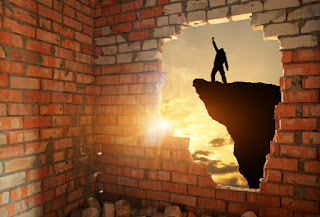React-Respond-Reflect: Decision Making Paths
Every problem you face gives you three choices. React, Respond, or Reflect. Each carries a different cost, different timing, and a different level of control. Knowing which one you’re choosing and why, is the difference between staying stuck and making progress.
The Paint It Red Philosophy. Click Here
React:
Fast, Emotional, Often Messy
Reaction
is immediate. It’s the snap answer, the sharp email, the raised voice in a
meeting. Sometimes it's necessary. Life doesn’t always give us the luxury of
time, but reaction tends to be fueled by emotion and driven by instinct.
Reactions
solve the surface. They’re not designed for long-term solutions. If you're in
danger, reaction can save you. If you're in a disagreement, it can often make
things worse. Reaction is useful in emergencies but risky in everyday
decision-making.
Processing
Time: Seconds
Risk: High
Control: Low
Respond:
Intentional, Measured, Effective
Response
comes after a pause. It’s deliberate. You hear the input, assess the situation,
and choose your next move. Responding doesn’t mean being slow, it means being
smart with your timing.
The
best problem-solvers respond. They focus on outcomes, not just emotions. They
ask, “What’s the goal here?” before taking action. A good response isn’t about
being right in the moment, it’s about making the right move overall.
Processing
Time: Minutes to
hours
Risk: Medium
Control: High
Reflect:
Where Growth Happens
Reflection
changes what you do the next time. It's the decision to look back, review what
worked (or didn’t), and adjust your approach. It’s not reactive or responsive.
It’s forward-looking.
Reflection
is where habits shift. It’s where better decision-making starts. You can’t
always reflect in real time, but if you never reflect at all, your problems
will keep repeating themselves.
Processing
Time: Days to
weeks
Risk: Low
Control: Highest
The Real Skill? Knowing Which to
Use
You
won’t always have time to reflect, and sometimes you’ll need to react. But your
default should be to respond. It’s where discipline, leadership, and progress
come from. And after the dust settles? Take a moment to reflect. That’s how you
make better moves next time and fewer urgent ones.
Sometimes
the most important thing you can say out loud or to yourself is, “I need a
moment.” It’s not a weakness. It’s not avoidance. It’s a deliberate pause
to prevent a poor reaction and give space for a better response. That moment
may be five seconds or five hours, but it creates the distance you need to
think, not just react. In a world that rewards speed, choosing to take a moment
is a quiet form of leadership.
You’re
human. You won’t always make the right call in the moment, and that’s okay. By
understanding the role of reflection, you give yourself the chance to circle
back, learn from what happened, and carry those lessons forward. The next time
a similar situation comes up, you’ll be better prepared to choose your response
instead of defaulting to a reaction. That’s how growth happens.




Comments
Post a Comment